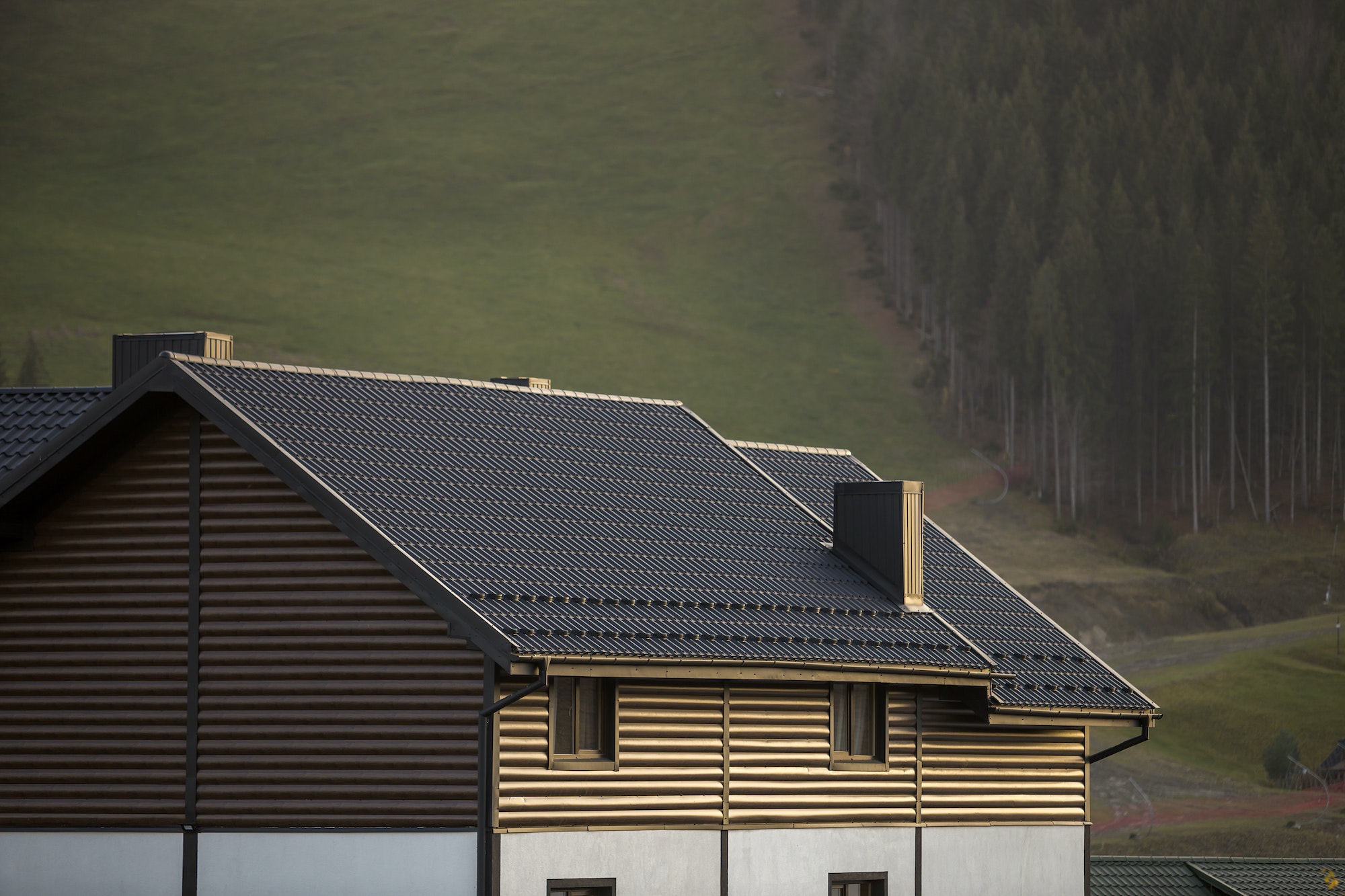Key Takeaways:
- Water damage can cause structural damage, mold growth, and electrical hazards if not addressed promptly.
- Signs of water damage include water stains, musty odors, warped flooring, and mold growth.
- Quick action is crucial in water damage restoration to prevent mold growth, minimize structural damage, protect personal belongings, and reduce restoration costs.
- Restoring water-damaged property involves assessing the extent of the damage and hiring professionals for inspection, water extraction, drying, mold remediation, repair, and documentation.
- Effective techniques and tools for restoration include moisture meters, injectidry systems, thermal imaging cameras, dehumidifiers, air movers, and wet vacuums.
- Preventive measures for water damage include regular maintenance, protective measures in flood-prone areas, and proper insulation.
- When hiring a professional water restoration company, consider their experience, availability, references, licenses, and comprehensive services, and ask key questions about their response time, restoration process, certifications, equipment, references, timeline, insurance coordination, and payment options.
- Insurance coverage for water damage restoration depends on your policy, so contact your insurance provider to understand the specific coverage details and document the damage thoroughly.
The Importance of Restoration Water Damage
Water damage is a common and costly problem that many property owners face. Whether it’s due to a burst pipe, a leaking roof, or a natural disaster like a flood, water damage can wreak havoc on your property and pose serious health risks if not addressed promptly and properly. Understanding the importance of restoration water damage is crucial for protecting your investment and ensuring the safety of your family.
Understanding the Dangers of Water Damage
Water damage goes beyond just the visible effects of standing water in your home or business. The presence of excess moisture can lead to the growth of mold and mildew, which can cause respiratory issues, allergic reactions, and even structural damage. Additionally, prolonged exposure to water can weaken the foundation of your property, compromising its structural integrity and putting you at risk.
Furthermore, water damage can also lead to electrical hazards, as water can come into contact with electrical wiring, outlets, and appliances, increasing the risk of shocks and fires. It’s important to address water damage immediately to mitigate these dangers and prevent further damage.
Signs and Symptoms of Water Damage in Your Property
Identifying water damage early is crucial to preventing further issues and minimizing the cost of restoration. Here are some common signs and symptoms of water damage to look out for:
- Visible water stains on walls, ceilings, or floors
- Musty odors indicating the presence of mold or mildew
- Warped or buckling flooring
- Peeling or bubbling paint or wallpaper
- Damp or wet carpeting
- Dripping or leaking pipes
- Mold growth
- Increase in humidity levels
If you notice any of these signs, it’s important to take immediate action to address the water damage and prevent further problems.
Why Quick Action is Crucial in Water Damage Restoration
Time is of the essence when it comes to water damage restoration. The longer you wait to address the issue, the more extensive and costly the damage can become. Here are some reasons why quick action is crucial:
Preventing Mold Growth: Mold can start growing within 24-48 hours after water exposure. Once mold begins to grow, it can spread rapidly, causing further damage to your property and posing serious health risks. Promptly drying and disinfecting the affected areas is essential to prevent mold growth.
Minimizing Structural Damage: Excess moisture can weaken the structural integrity of your property, leading to sagging floors, crumbling drywall, and even collapse in severe cases. Swift action to remove standing water and thoroughly dry the affected areas can help minimize structural damage.
Protecting Personal Belongings: Water damage can ruin furniture, electronics, documents, and sentimental items. Acting quickly to salvage and restore your possessions can help mitigate losses and preserve their value.
Reducing Restoration Costs: The longer water damage is left untreated, the higher the restoration costs will be. Repairing structural damage, replacing damaged materials, and addressing mold growth can be significantly more expensive than addressing the issue promptly.
By taking quick action and engaging professional water damage restoration services, you can minimize the damage to your property, protect your health, and reduce the overall costs of restoration.
The Process of Restoring Water Damaged Property
Restoring water-damaged property involves a comprehensive process that requires careful assessment, specialized equipment, and expertise. Here is an overview of the key steps involved in restoring water-damaged property:
Assessing the Extent of Water Damage
Before restoration can begin, it’s crucial to assess the extent of the water damage. This involves a thorough inspection of the property to identify areas affected by water and determine the category and class of water damage. There are three categories of water damage:
- Clean Water: Water from a clean and sanitary source, such as a broken pipe or faucet leak.
- Gray Water: Slightly contaminated water that may contain chemicals or contaminants, such as water from a dishwasher or washing machine.
- Black Water: Highly contaminated water that may contain hazardous substances, such as sewage water or floodwater.
Additionally, water damage is classified into four classes based on the severity and extent of the damage:
- Class 1: Minimal water intrusion with little to no evaporation required.
- Class 2: Significant water intrusion that affects a larger area and requires some evaporation.
- Class 3: Extensive water intrusion that saturates ceilings, walls, and floors.
- Class 4: Specialty drying situations that require advanced techniques and equipment.
By understanding the category and class of water damage, restoration professionals can develop a tailored plan to effectively and efficiently restore the property.
The Role of Professionals in Water Damage Restoration
Water damage restoration is a complex process that requires specialized knowledge, skills, and equipment. Hiring a professional water restoration company is crucial to ensure the successful restoration of your property. Here are some key roles professionals play in water damage restoration:
Inspection and Assessment: Professionals will conduct a thorough inspection to assess the extent of the water damage, identify potential hazards, and develop a restoration plan.
Water Extraction: Using powerful pumps and vacuums, professionals will remove standing water from the property to prevent further damage and facilitate the drying process.
Drying and Dehumidification: Professionals will use specialized equipment such as dehumidifiers and high-speed air movers to thoroughly dry the affected areas, including walls, floors, and furniture.
Mold Remediation: If mold is present, professionals will utilize industry-approved techniques to safely remove and mitigate mold growth, preventing further damage and health risks.
Repair and Restoration: Professionals will repair or replace damaged materials, such as drywall, flooring, and insulation, to restore the property to its pre-damaged condition.
Documentation and Insurance Assistance: Professionals will document the entire restoration process, including before and after photos, and work closely with insurance companies to assist in the claims process.
By entrusting the restoration process to professionals, you can be confident that your property will be restored safely and efficiently.
Effective Techniques and Tools for Restoring Water Damaged Property
Restoring water-damaged property requires the use of effective techniques and specialized tools to extract water, dry the affected areas, and restore the property to its pre-damaged condition. Here are some commonly used techniques and tools:
Moisture Meters: These devices are used to measure the moisture content in materials such as drywall, wood, and insulation. Moisture meters help professionals determine the extent of water damage and monitor the effectiveness of the drying process.
Injectidry System: This specialized drying system uses a combination of drying mats and injectors to deliver warm, dry air into wall cavities, ceilings, and beneath flooring, effectively drying hard-to-reach areas without the need for extensive demolition.
Thermal Imaging Cameras: These cameras detect temperature variations and moisture levels in materials, helping professionals identify hidden water damage behind walls and other surfaces.
Dehumidifiers: These devices remove excess moisture from the air, reducing humidity levels and accelerating the drying process. Professionals use different types of dehumidifiers based on the size and severity of the water damage.
Air Movers: Also known as blowers or fans, air movers generate high-velocity airflow to accelerate evaporation and promote drying. Professionals strategically place air movers to direct airflow towards wet surfaces and enhance drying efficiency.
Wet Vacuums: Wet vacuums are used to extract standing water from floors, carpets, and upholstery. These powerful vacuums can remove large volumes of water quickly, reducing the risk of further damage.
By employing these effective techniques and utilizing specialized tools, professionals can efficiently restore water-damaged property and mitigate the long-term effects of water damage.
Prevention Techniques for Water Damage
While water damage can be devastating, there are several preventive measures you can take to protect your property from water-related issues. Implementing these techniques can help you avoid the need for extensive restoration and save you time, money, and stress.
Maintenance Tips to Prevent Water Damage in Your Home or Business
Regular maintenance is essential for preventing water damage in your property. Here are some maintenance tips to keep in mind:
- Inspect your roof annually for any signs of leaks or damage. Repair or replace missing or damaged shingles promptly.
- Clean and unclog gutters and downspouts regularly to ensure proper drainage.
- Monitor your water bill for any sudden increases, which could indicate a hidden water leak.
- Inspect and maintain your plumbing system, including pipes, faucets, and water heaters, for any leaks or corrosion.
- Seal gaps and cracks in windows, doors, and walls to prevent water intrusion.
- Ensure your sump pump is in good working condition and consider installing a backup power source.
By regularly inspecting and maintaining your property, you can identify potential issues early and address them before they escalate into significant water damage problems.
Protective Measures for Water Damage in Flood-Prone Areas
If you live in a flood-prone area, taking additional protective measures is crucial to minimize the risk of water damage. Here are some steps you can take:
- Elevate your electrical panel, switches, and outlets above the flood level.
- Install flood-resistant barriers, such as flood shields or sandbags, around windows, doors, and other vulnerable areas.
- Apply waterproof coatings or sealants to your foundation walls to prevent water intrusion.
- Install a backwater valve on your sewer line to prevent sewage backup during heavy rains or flooding.
- Elevate your appliances, including washers, dryers, and HVAC systems, on raised platforms.
These protective measures can help safeguard your property against floodwaters and minimize the risk of extensive water damage.
The Importance of Proper Insulation in Preventing Water Damage
Proper insulation is essential for preventing water damage caused by condensation and moisture buildup. Here are some key areas to insulate:
- Attic: Insulate and ventilate your attic to prevent the buildup of moisture, which can lead to roof damage and mold growth.
- Pipes: Insulate exposed pipes to prevent them from freezing and bursting during cold weather.
- Basement and Crawl Space: Install moisture barriers and insulation in basements and crawl spaces to prevent water seepage and reduce humidity levels.
- Exterior Walls: Ensure your exterior walls are properly insulated to minimize the risk of moisture penetration and condensation.
By investing in proper insulation, you can create a barrier against water damage and improve the energy efficiency of your property.
Hiring a Professional Water Restoration Company
When facing water damage, hiring a professional water restoration company is crucial for efficient and effective restoration. Here are some factors to consider when choosing the right company for your needs:
Choosing the Right Water Restoration Company for Your Needs
When selecting a water restoration company, consider the following:
- Experience and Expertise: Look for a company with extensive experience in water damage restoration and a team of certified professionals who are trained in the latest techniques and technologies.
- 24/7 Availability: Water damage can occur at any time, so choose a company that offers round-the-clock emergency services to ensure immediate response.
- References and Reviews: Ask for references from past clients and read online reviews to gauge the company’s reputation and the quality of their services.
- Licenses and Insurance: Ensure that the company is properly licensed and insured to protect yourself and your property.
- Comprehensive Services: Choose a company that offers a wide range of services, including water extraction, drying, mold remediation, and repairs, to handle all aspects of restoration.
By selecting a reputable and reliable water restoration company, you can have peace of mind knowing that your property is in good hands.
Key Questions to Ask a Water Restoration Company Before Hiring
Prior to hiring a water restoration company, ask the following questions to ensure they are the right fit for your requirements:
- How quickly can you respond to a water damage emergency?
- What are the steps involved in the restoration process?
- Do you have the necessary certifications and licenses?
- What types of equipment and techniques do you use?
- Can you provide references from satisfied customers?
- What is the estimated timeline for completing the restoration?
- Do you work directly with insurance companies?
- What are the payment options?
Asking these questions will help you gather the necessary information to make an informed decision and ensure that the water restoration company meets your specific needs.
Understanding the Costs and Insurance Coverage for Water Damage Restoration
The costs of water damage restoration can vary depending on the extent of the damage and the services required. It’s important to understand the costs involved and the insurance coverage available.
Insurance coverage for water damage restoration depends on the type of policy you have. Most homeowner’s insurance policies cover water damage caused by sudden and accidental events, such as burst pipes or appliance leaks. However, damage caused by flooding or neglect may not be covered.
Contact your insurance provider to understand the specific coverage details and document the damage thoroughly to support your insurance claim. A professional water restoration company can also work closely with your insurance company to ensure a smooth claims process.
Keep in mind that the cost of restoration is minor compared to the potential expenses resulting from prolonged water damage. By investing in professional restoration services, you can potentially save yourself from substantial financial burdens in the long run.
In conclusion, restoration water damage is a complex process that requires prompt action, specialized knowledge, and professional expertise. By understanding the importance of restoration, taking preventive measures, and hiring a reputable water restoration company, you can effectively mitigate water damage and ensure the safety and longevity of your property.
Discover more from Futurist Architecture
Subscribe to get the latest posts sent to your email.



